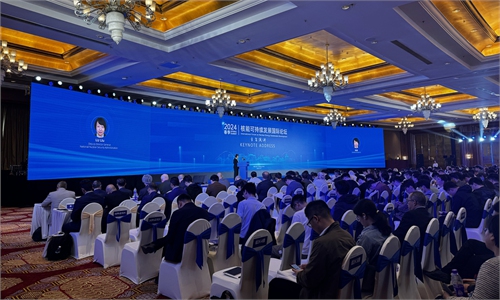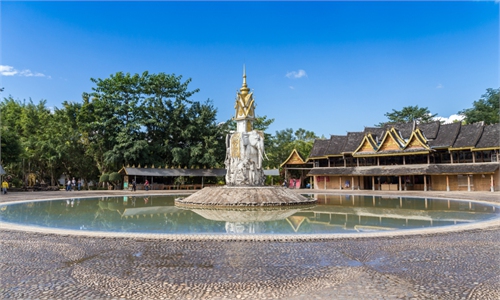IN-DEPTH / IN-DEPTH
More Americans embrace prepping lifestyle, reflecting deeper anxieties linked to political polarization, social divide
Editor's Note:
Preppers are a group of people who believe a catastrophe or emergency might happen in the future and take steps to prepare in advance. They often hoard water and food, build shelters, and even stockpile ammunition and construct underground bunkers.
In recent years, the American doomsday prepper community has grown larger and more diverse, with increasingly extreme preparatory measures.
The old stereotype of doomsday preppers being "conspiracy theorists and paranoid uncles" living on the fringes of society is gradually changing.
According to Fox News, more Americans are beginning to plan for future disasters. Survival-themed reality shows are frequently featured on streaming platforms. On social media, disaster preparation bloggers have amassed millions of followers across various platforms.
Analysts from both the US and Europe suggest that the rising number of preppers and the extreme nature of their preparations reflect widespread anxiety in American society, closely related to political polarization, racial issues, and class divisions.
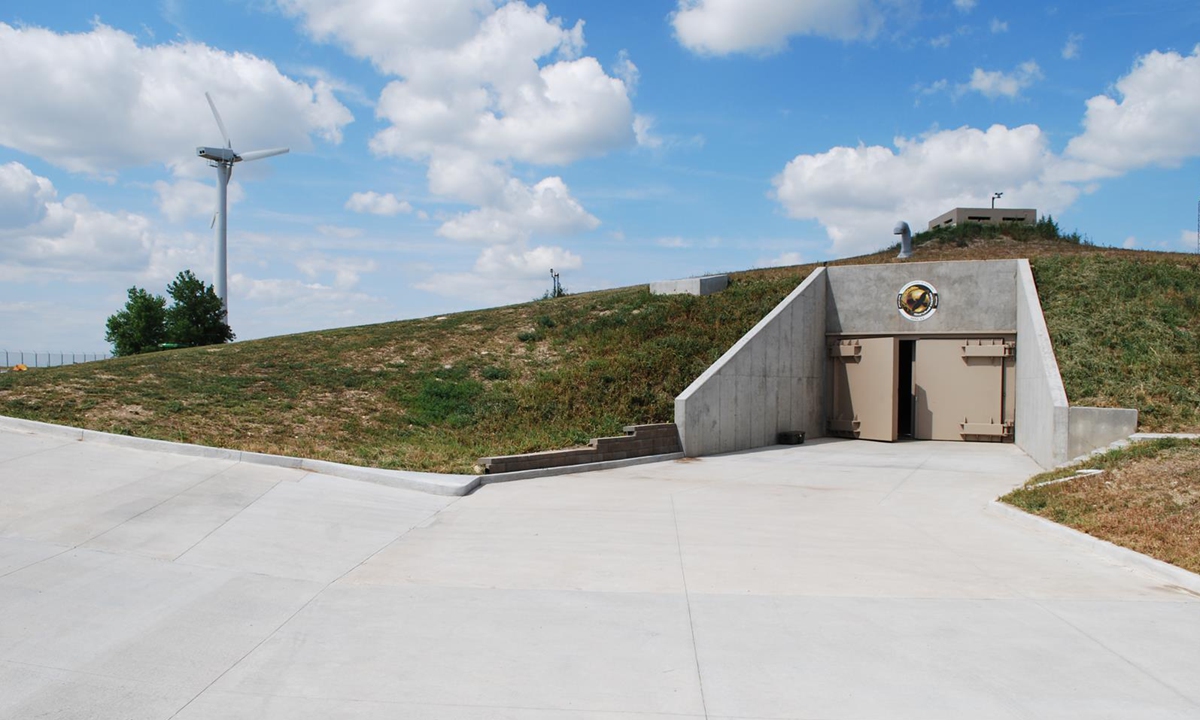
Enlarging community
Helena, a student from China studying in Atlanta, initially thought the "doomsday prep kits" she saw at her local Costco were incredibly novel. However, as she adapted to life in the US over the years, she came to understand the necessity and ubiquity of these products.
"Doomsday kits are very practical in the US, especially during emergencies like the 2021 Texas power outage," she told the Global Times. "A small generator is also essential. I personally own a small solar panel, though it can only power a fan."
On Costco's website, a large tub of instant noodles that serves 150 people is available for $100, providing about 25,000 calories and a shelf life of 25 years. Additionally, affordable doomsday tool kits are also available on Temu, and they are currently on sale.
"This is a totally new market," said a survival skills instructor with 20 years of experience, quoted by The Wall Street Journal. Initially, the instructor's outdoor survival courses attracted only hardcore outdoor enthusiasts, but since the Israeli-Palestinian conflict, he has received more calls from clients.
According to The Wall Street Journal, many companies selling survival toolkits and other doomsday preparation products have emerged in recent years.
A report released by Zion Market Research in March this year shows that the global survival tools market is expected to reach $2.46 billion by 2030, with a compound annual growth rate of over 7 percent from 2023 to 2030.
The report indicates that sales of survival toolkits have risen, showing that Americans are more inclined to have emergency supplies on hand than in previous years.
For instance, Preppi Emergency Kits, which resemble classic doctor's medical kits, saw a 29 percent increase in sales in 2023 compared to 2022. The Ready Set Judy kits, which are bright orange, doubled in sales in June 2023 when wildfires occurred in the Northeast US. Both brands' kits include a hand-crank radio, masks, non-perishable food, first aid supplies, and other equipment.
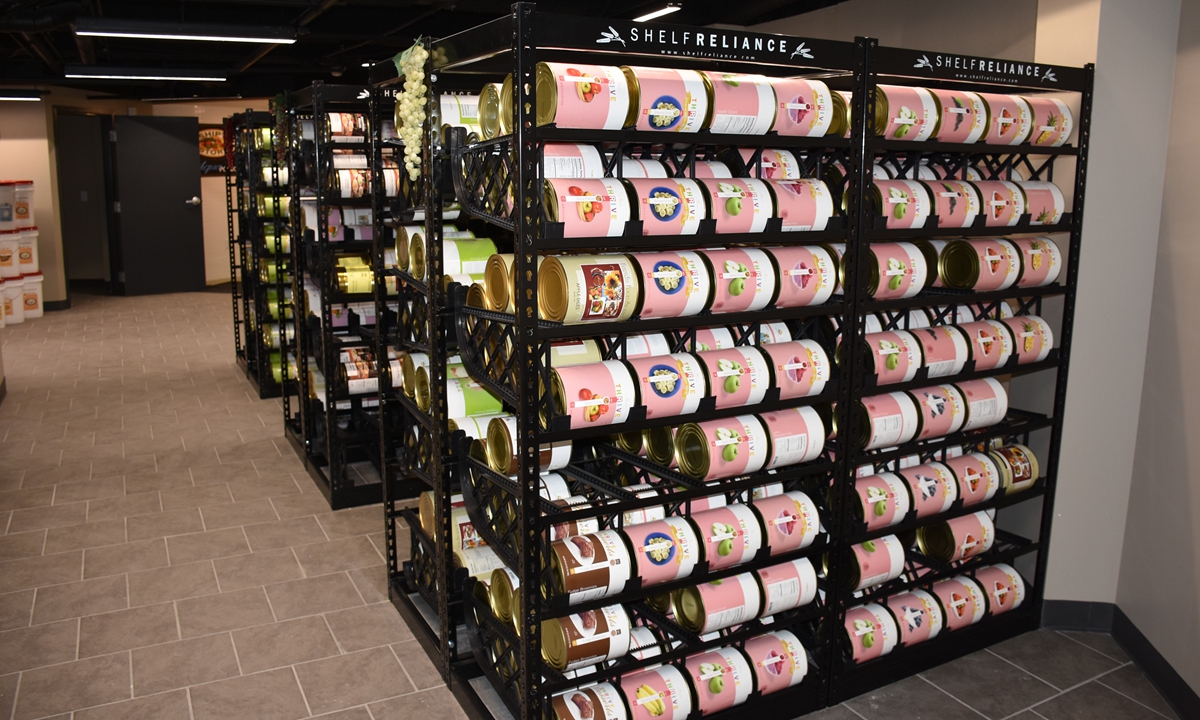
Moreover, NBC reported that what was once a fringe idea among doomsday preppers is now becoming popular among celebrities and the wealthy.
In December 2023, reports emerged that Meta CEO Mark Zuckerberg was constructing a 4,000-square-foot underground shelter at his Hawaiian home. Kim Kardashian, Tom Cruise, and Shaquille O'Neal have also built bunkers or safe rooms. Open AI founder and CEO Samuel Harris Altman is also among the doomsday preppers.
Data released in April 2023 by the US research website Finder showed that the percentage of people in the US spending on emergency preparedness increased from 20 percent in 2020 to 29 percent in 2023, with a total expenditure of about $11 billion over the last 12 months.
Political and radical
However, as the prepper community expands, its internal atmosphere is also changing.
A YouTuber, who focuses on doomsday preparation, told the Global Times that she has left the prepper community and now discusses saving money and investing instead. In her view, the prepper community has become increasingly "radical and political," even to the extent that her personal safety has been threatened.
In a video clip, she stated that she has observed an emerging mentality of comparison and competition within the community, with many boasting about their equipment and resources, claiming to be better and more prepared than others.
"But you don't need 20 different guns and 50,000 bullets; you don't need special tactics and combat training to survive," she said, advocating for a more practical and simple preparation method focused on satisfying quality of life and emotional needs, opposing the view of preparation as an extreme or luxurious activity.
According to the Business Insider website, there is a community called "Riverbed Ranch" in the western Utah desert, which is actually a land cooperative consisting of 135 shareholders, living a "self-sufficient" life. According to the community, many residents are doomsday preppers, some are conspiracy theorists, while others just want to retire. Most residents at "Riverbed Ranch" believe that their community is distinctly different from the stereotype of "armed doomsday preppers."
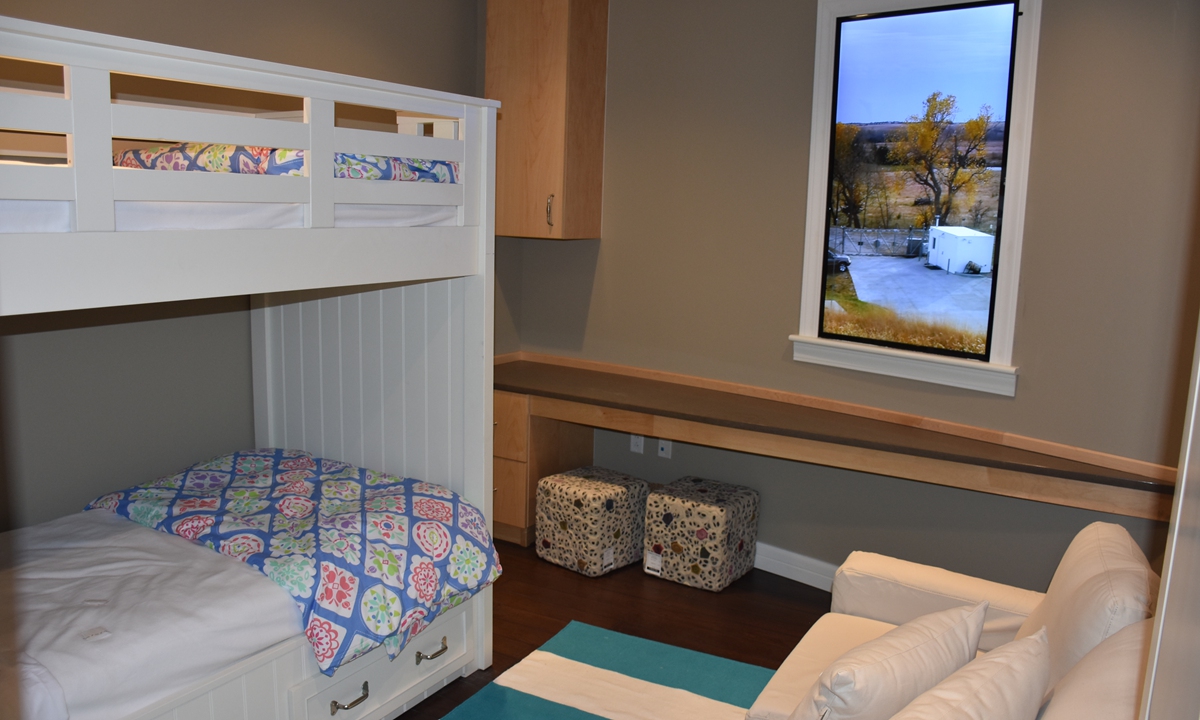
A resident named Priscilla Hart mentioned that many people, like them, moved there because they hoped to reduce their dependence on political, economic, and social structures, with the main reason being "the instability and ambiguity of society." "The more you can learn to take care of yourself and not rely on the government, the better," she said.
A 2023 survey by the Pew Research Center showed that only 16 percent of respondents believe the government will do the right thing, marking a historic low. Meanwhile, 79 percent of people said that Americans have "too little" or "very little" trust in each other.
USA Today reported that more and more Americans are preparing for "impending disasters" before major elections. Overall, doomsday preparation activities seem to reflect the deep uncertainties many Americans feel.
A poll conducted by USA Today and Suffolk University at the end of 2023 found that 67 percent of Americans believe the country is facing bigger problems than usual or is in the worst state they have ever seen.
A world of political polarization
US political commentator and journalist Caleb Maupin told the Global Times that the rise of the "doomsday preparation" movement reflects not only widespread anxiety in US society but also exposes a declining trust in the government and public institutions. From urban to rural areas, from left to right, a general sense of social pessimism is spreading across all strata.
Maupin explained that since the 1950s, the US has had the subculture of "preparation actions" associated with doomsday scenarios, often linked to far-right militias and more fanatical Christian sects.
In recent years, this culture has seen a noticeable uptrend due to national political polarization and economic downturns. Pessimistic media coverage has intensified people's unease and fear, causing survivalist ideas to gradually permeate mainstream society. The sense of national identity that Americans once held is fading, replaced by a widespread pessimism about the country's future and fears of civil war and economic disasters, Maupin noted.
According to Maupin, race and class issues in the US have a profound impact on doomsday preparation culture. While some media content on survival culture features wealthy individuals building luxurious "panic rooms" and installing complex security systems, a broader range of survivalist media targets the working class in economically depressed areas who distrust national institutions.
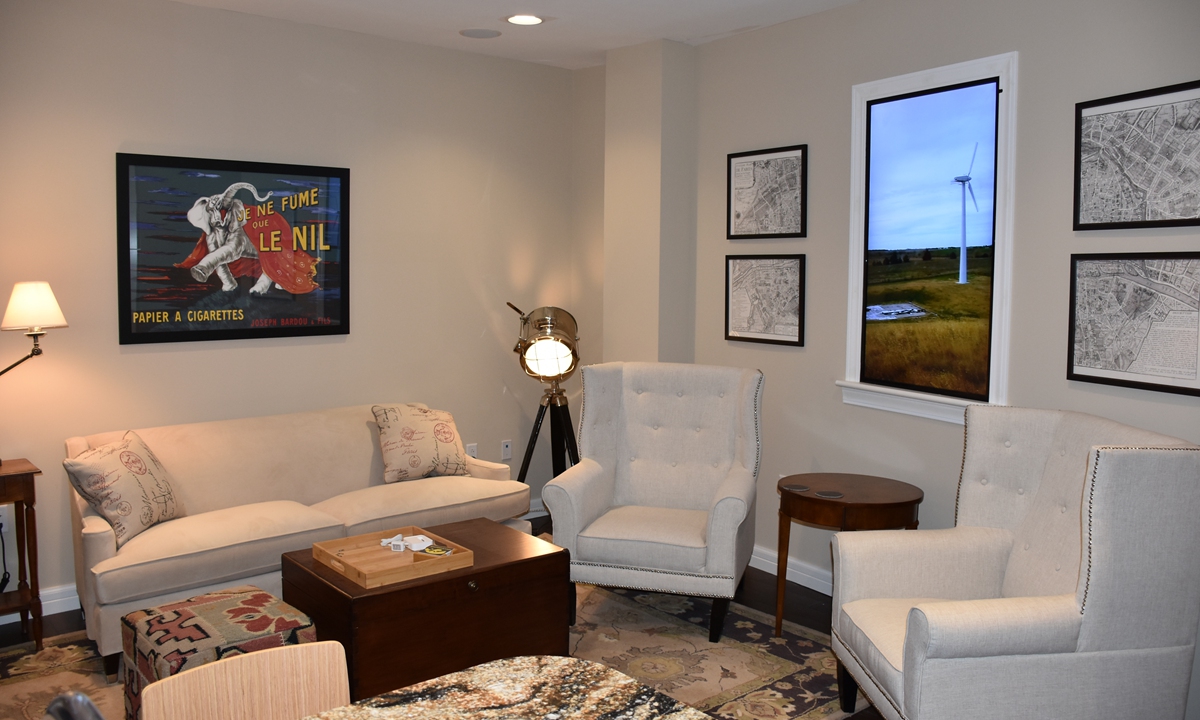
He specifically mentioned that in low-income Black communities, there has long been a perception that the government is attempting racial cleansing, a sentiment that has also led to a high rate of vaccine refusal. Meanwhile, more and more people in rural and suburban white areas feel that the country is heading toward collapse.
US political commentator and journalist Bradley Blankenship recently wrote in the Global Times, analyzing that the doomsday preparation subculture, originally present among far-right groups, has gradually infiltrated mainstream US culture.
The occurrences of recent years, including the surge of civil unrest sparked by movements such as Black Lives Matter, have laid bare the deep-seated fault lines running through American society. This polarization transcends mere ideological and policy disagreements, encompassing fundamental questions regarding the role of government, the essence of democracy and the legitimacy of societal institutions, according to Blankenship.
This political polarization is also affecting Europe, where people have become more enthusiastic about stockpiling food in recent years.
Christian Wagner, a European issues expert from Germany currently based in Beijing, told the Global Times that although Europe does not have as strong a doomsday prepper culture as the US, concerns and unease about the future are also growing in society. Wagner believes that this anxiety primarily stems from concerns about climate change and recent political polarization in Europe.
Wagner said that in Europe, the Green Party has consistently tried to influence public sentiment on the issue of climate change, describing the climate crisis as a looming doomsday disaster and using this emotional narrative to attract support. Wagner observed that since around 2015, this fear of impending disaster has taken a place in public consciousness, leading to a general feeling that the world is on the brink of collapse.
Although not digging fortresses in their backyards like Americans, Europeans are also stockpiling supplies in their apartments like "hamsters," Wagner told the Global Times.
However, this phenomenon is occurring alongside significant price increases and energy shortages. "Everything in Germany is becoming more expensive. Even though people want to be prepared and purchase a heat pump for heating or stock up on more food, they can't, because they can't afford it," Wagner lamented.
Wagner reflected that history seems to be repeating itself, with Europe experiencing a period similar to the 1920s and 1930s, which followed a "golden age" with an economic crisis and social instability, eventually leading to the rise of fascism and World War II.
Wagner said ordinary people increasingly adopt a defensive mindset, focusing more on self-protection and preparing for potentially extreme situations such as war or a global apocalypse.
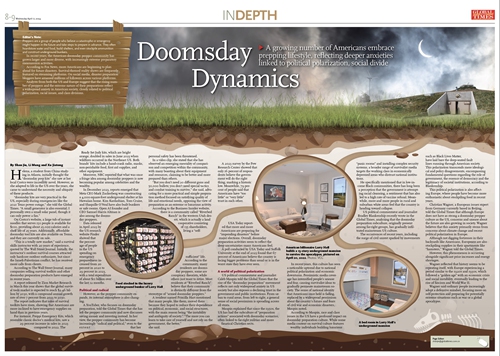
Preppers are a group of people who believe a catastrophe or emergency might happen in the future and take steps to prepare in advance. They often hoard water and food, build shelters, and even stockpile ammunition and construct underground bunkers.
In recent years, the American doomsday prepper community has grown larger and more diverse, with increasingly extreme preparatory measures.
The old stereotype of doomsday preppers being "conspiracy theorists and paranoid uncles" living on the fringes of society is gradually changing.
According to Fox News, more Americans are beginning to plan for future disasters. Survival-themed reality shows are frequently featured on streaming platforms. On social media, disaster preparation bloggers have amassed millions of followers across various platforms.
Analysts from both the US and Europe suggest that the rising number of preppers and the extreme nature of their preparations reflect widespread anxiety in American society, closely related to political polarization, racial issues, and class divisions.

The entrance of American billionaire Larry Hall's underground mansion to survive the apocalypse, pictured on April 20, 2022. Photos: VCG
Enlarging community
Helena, a student from China studying in Atlanta, initially thought the "doomsday prep kits" she saw at her local Costco were incredibly novel. However, as she adapted to life in the US over the years, she came to understand the necessity and ubiquity of these products.
"Doomsday kits are very practical in the US, especially during emergencies like the 2021 Texas power outage," she told the Global Times. "A small generator is also essential. I personally own a small solar panel, though it can only power a fan."
On Costco's website, a large tub of instant noodles that serves 150 people is available for $100, providing about 25,000 calories and a shelf life of 25 years. Additionally, affordable doomsday tool kits are also available on Temu, and they are currently on sale.
"This is a totally new market," said a survival skills instructor with 20 years of experience, quoted by The Wall Street Journal. Initially, the instructor's outdoor survival courses attracted only hardcore outdoor enthusiasts, but since the Israeli-Palestinian conflict, he has received more calls from clients.
According to The Wall Street Journal, many companies selling survival toolkits and other doomsday preparation products have emerged in recent years.
A report released by Zion Market Research in March this year shows that the global survival tools market is expected to reach $2.46 billion by 2030, with a compound annual growth rate of over 7 percent from 2023 to 2030.
The report indicates that sales of survival toolkits have risen, showing that Americans are more inclined to have emergency supplies on hand than in previous years.
For instance, Preppi Emergency Kits, which resemble classic doctor's medical kits, saw a 29 percent increase in sales in 2023 compared to 2022. The Ready Set Judy kits, which are bright orange, doubled in sales in June 2023 when wildfires occurred in the Northeast US. Both brands' kits include a hand-crank radio, masks, non-perishable food, first aid supplies, and other equipment.

Food stocked in the luxury underground bunker of Larry Hall
Moreover, NBC reported that what was once a fringe idea among doomsday preppers is now becoming popular among celebrities and the wealthy.
In December 2023, reports emerged that Meta CEO Mark Zuckerberg was constructing a 4,000-square-foot underground shelter at his Hawaiian home. Kim Kardashian, Tom Cruise, and Shaquille O'Neal have also built bunkers or safe rooms. Open AI founder and CEO Samuel Harris Altman is also among the doomsday preppers.
Data released in April 2023 by the US research website Finder showed that the percentage of people in the US spending on emergency preparedness increased from 20 percent in 2020 to 29 percent in 2023, with a total expenditure of about $11 billion over the last 12 months.
Political and radical
However, as the prepper community expands, its internal atmosphere is also changing.
A YouTuber, who focuses on doomsday preparation, told the Global Times that she has left the prepper community and now discusses saving money and investing instead. In her view, the prepper community has become increasingly "radical and political," even to the extent that her personal safety has been threatened.
In a video clip, she stated that she has observed an emerging mentality of comparison and competition within the community, with many boasting about their equipment and resources, claiming to be better and more prepared than others.
"But you don't need 20 different guns and 50,000 bullets; you don't need special tactics and combat training to survive," she said, advocating for a more practical and simple preparation method focused on satisfying quality of life and emotional needs, opposing the view of preparation as an extreme or luxurious activity.
According to the Business Insider website, there is a community called "Riverbed Ranch" in the western Utah desert, which is actually a land cooperative consisting of 135 shareholders, living a "self-sufficient" life. According to the community, many residents are doomsday preppers, some are conspiracy theorists, while others just want to retire. Most residents at "Riverbed Ranch" believe that their community is distinctly different from the stereotype of "armed doomsday preppers."

A bed room in Larry Hall's underground mansion
A resident named Priscilla Hart mentioned that many people, like them, moved there because they hoped to reduce their dependence on political, economic, and social structures, with the main reason being "the instability and ambiguity of society." "The more you can learn to take care of yourself and not rely on the government, the better," she said.
A 2023 survey by the Pew Research Center showed that only 16 percent of respondents believe the government will do the right thing, marking a historic low. Meanwhile, 79 percent of people said that Americans have "too little" or "very little" trust in each other.
USA Today reported that more and more Americans are preparing for "impending disasters" before major elections. Overall, doomsday preparation activities seem to reflect the deep uncertainties many Americans feel.
A poll conducted by USA Today and Suffolk University at the end of 2023 found that 67 percent of Americans believe the country is facing bigger problems than usual or is in the worst state they have ever seen.
A world of political polarization
US political commentator and journalist Caleb Maupin told the Global Times that the rise of the "doomsday preparation" movement reflects not only widespread anxiety in US society but also exposes a declining trust in the government and public institutions. From urban to rural areas, from left to right, a general sense of social pessimism is spreading across all strata.
Maupin explained that since the 1950s, the US has had the subculture of "preparation actions" associated with doomsday scenarios, often linked to far-right militias and more fanatical Christian sects.
In recent years, this culture has seen a noticeable uptrend due to national political polarization and economic downturns. Pessimistic media coverage has intensified people's unease and fear, causing survivalist ideas to gradually permeate mainstream society. The sense of national identity that Americans once held is fading, replaced by a widespread pessimism about the country's future and fears of civil war and economic disasters, Maupin noted.
According to Maupin, race and class issues in the US have a profound impact on doomsday preparation culture. While some media content on survival culture features wealthy individuals building luxurious "panic rooms" and installing complex security systems, a broader range of survivalist media targets the working class in economically depressed areas who distrust national institutions.

A living room in Larry Hall's 15-story underground mansion
He specifically mentioned that in low-income Black communities, there has long been a perception that the government is attempting racial cleansing, a sentiment that has also led to a high rate of vaccine refusal. Meanwhile, more and more people in rural and suburban white areas feel that the country is heading toward collapse.
US political commentator and journalist Bradley Blankenship recently wrote in the Global Times, analyzing that the doomsday preparation subculture, originally present among far-right groups, has gradually infiltrated mainstream US culture.
The occurrences of recent years, including the surge of civil unrest sparked by movements such as Black Lives Matter, have laid bare the deep-seated fault lines running through American society. This polarization transcends mere ideological and policy disagreements, encompassing fundamental questions regarding the role of government, the essence of democracy and the legitimacy of societal institutions, according to Blankenship.
This political polarization is also affecting Europe, where people have become more enthusiastic about stockpiling food in recent years.
Christian Wagner, a European issues expert from Germany currently based in Beijing, told the Global Times that although Europe does not have as strong a doomsday prepper culture as the US, concerns and unease about the future are also growing in society. Wagner believes that this anxiety primarily stems from concerns about climate change and recent political polarization in Europe.
Wagner said that in Europe, the Green Party has consistently tried to influence public sentiment on the issue of climate change, describing the climate crisis as a looming doomsday disaster and using this emotional narrative to attract support. Wagner observed that since around 2015, this fear of impending disaster has taken a place in public consciousness, leading to a general feeling that the world is on the brink of collapse.
Although not digging fortresses in their backyards like Americans, Europeans are also stockpiling supplies in their apartments like "hamsters," Wagner told the Global Times.
However, this phenomenon is occurring alongside significant price increases and energy shortages. "Everything in Germany is becoming more expensive. Even though people want to be prepared and purchase a heat pump for heating or stock up on more food, they can't, because they can't afford it," Wagner lamented.
Wagner reflected that history seems to be repeating itself, with Europe experiencing a period similar to the 1920s and 1930s, which followed a "golden age" with an economic crisis and social instability, eventually leading to the rise of fascism and World War II.
Wagner said ordinary people increasingly adopt a defensive mindset, focusing more on self-protection and preparing for potentially extreme situations such as war or a global apocalypse.

GT


